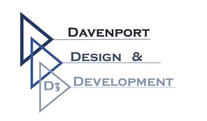Templates are a must-have if you want to complete your deliverable in record time. Here's the skinny on templates and how you can use them to get your project done faster without compromising content or quality...
What is a template?
A template is a shell that houses your content. For example, if you are creating an e-learning course, the template is the basic structure for placing your content.
When do I use templates?
Every phase of a learning solution project can use templates! Here are a few (but not all) examples:
Why use templates?
Templates help you with:
Where do I find templates?
You can find great templates online. Just query on the app (e.g., Articulate) and "templates" and you'll see what's available for public use. As I create D3 University courses about rapid prototyping and using templates, I will provide templates that are ready to use.
Your best templates will be the ones you've used in the past for other projects, but just about all apps and software you use have pre-built templates. I rarely use those because they are too basic for my needs, but I sometimes use them to establish the look and feel of my template.
WARNING: Do NOT take the work you've done for one client or employer to use for someone else! It's OK to look at the layout you've used to create projects for others and borrow ideas for your current client or project, but you cannot use someone else's branding (color schemes, logos, proprietary fonts, graphics) for a different client/employer.
What is a template?
A template is a shell that houses your content. For example, if you are creating an e-learning course, the template is the basic structure for placing your content.
When do I use templates?
Every phase of a learning solution project can use templates! Here are a few (but not all) examples:
- Storyboards for eLearning: Use a Microsoft™ PowerPoint template to get your eLearning course off to a quick start! Typical starting slides include Course Title, Agenda, Learning Objectives, Lesson Introduction (for each lesson), Lesson Content (different slide styles), Activity, Lesson Summary, Course Summary.
- Leader and Participant Guides: Templates built in Microsoft™ Word are most often used for classroom learning. These templates typically include a Lesson Title page, legal info, Table of Contents, Course Overview, Lesson Intro, Lesson Content, and Lesson/Course Summary.
- Design documents: I have literally hundreds of Design Document templates that I've used over the years because I always end up customizing the template for each client. To create my template, I first work with the client to determine how deep the Design needs to be, then build either a Microsoft™ Word or Excel template to meet their needs.
Why use templates?
Templates help you with:
- Working smart. When you are developing content, you get into a rhythm, and templates are at the root of your rhythm! For example, if you are moving content from a Design Document to your template, you will know exactly where to place content such as learning objectives, estimated learning time, and even source content, because your template will already have these items, either as placeholders or sometimes with sample content that you can replace.
- Consistent look and feel. For example, if you are using a Word template, you can create custom Styles and use those to make sure headings, bullets, tables, and numbered lists use the same formatting.
- Looking professional. Look at styles, graphics, fonts, and formats that appeal to you. Adjust your templates to look like what you enjoy seeing. Assuming you have good taste :), others will like your content if only because it looks good!
- Visual organization. A template follows a set of repeating visual cues. For example, the beginning of each lesson in a course might begin with the lesson title, estimated time to complete, lesson objectives, and lesson topics. Learners will "learn" the structure of your content, and thus learn faster because they can locate information more quickly!
Where do I find templates?
You can find great templates online. Just query on the app (e.g., Articulate) and "templates" and you'll see what's available for public use. As I create D3 University courses about rapid prototyping and using templates, I will provide templates that are ready to use.
Your best templates will be the ones you've used in the past for other projects, but just about all apps and software you use have pre-built templates. I rarely use those because they are too basic for my needs, but I sometimes use them to establish the look and feel of my template.
WARNING: Do NOT take the work you've done for one client or employer to use for someone else! It's OK to look at the layout you've used to create projects for others and borrow ideas for your current client or project, but you cannot use someone else's branding (color schemes, logos, proprietary fonts, graphics) for a different client/employer.





 RSS Feed
RSS Feed